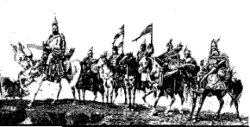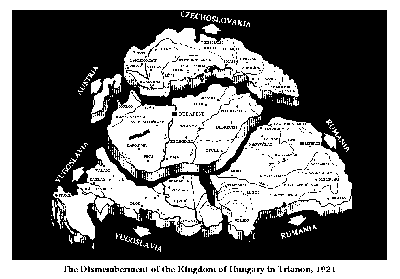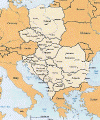


To an Easterner, the word "Hungary" conjures images of a fierce, horse-riding warrior nation. Annuals from the Han Dynasty spoke of a nomadic tribe known as the Hsiung Nu defeated by the Han Emperor Wu Ti and forced to move westwards. Whether or not the Hungarians are related to this ancient tribe is subject to historical debate, but indeed the image of the Magyars as a ferocious, warring tribe is not too far from historically reality.

One thousand one hundred years ago, seven Magyar tribes under the leadership of Khan Árpád swept across the Transdanubian Plains and occupied what is today Hungary and Transylvania (today in Romania). These horsemen staged numerous raids across Europe, striking fear in the hearts of Europeans. These ceased when the Hungarians converted to Christianity under King Stephen (Szent István), the Magyars' first king and patron saint. Arts and culture flourished in mediaeval Hungary, which also included Slovakia ( ~ in fact, the Slovak capital, Bratislava, was once capital of royal Hungary during the Turkish occupation, and was known as Pozsony then), Transylvania in Romania, Vojvodina in Serbia, Croatia, and Burgenland in Austria. The sense of pride of their ancient glories among Hungarians is evident from the many maps that hang in Hungarian homes and offices even today, that show the borders of the old Hungary, i.e., before the Treaty of Trianon in 1920 (after the defeat of the Austro-Hungarian Monarchy during WWI) which stripped the country of 68% of its territory and 58% of its population.


Hungary came under the rule of the Ottoman Turks when the entire Hungarian Army, King Louis II Jagiello and the "flower of the Hungarian nobility" were wiped out at the Battle of Mohacs in August 1526.
![]() Budapest, Capital of the brave Hungarians...
Budapest, Capital of the brave Hungarians...
 Back to TWC's Mad Rush Homepage
Back to TWC's Mad Rush Homepage
 TWC's Homepage
TWC's Homepage
 Please email your comments to weecheng@post1.com
Please email your comments to weecheng@post1.com